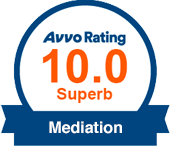Can my QDRO get denied?
You’ve retained a lawyer to draft a QDRO; you’ve signed; your former spouse has signed; the Court has signed; a certified copy has been served on the Plan and you’re eagerly waiting for confirmation that the money you’re owed has been transferred to your name.
And then you get that dreaded letter: DENIED. Denied?! It may seem that because the Court order a division of retirement benefits, the Plan cannot deny the very Court order which divides those retirement benefits.
Believe it or not, denials happen. There are many reasons, but here are a few reasons why a plan might deny a QDRO:
Wrong Name of Plan. Usually, QDRO drafters take the name of the plan from a recent statement or by consulting a database maintained by the Department of Labor. But this is not a failsafe system. Plan names change. A company name might spelled out on one document but abbreviated in another. Two words maybe hyphenated or not. Some words may be in all caps or not. “Thrift and Savings” is different from “Savings and Thrift.”
Incorrect Language. Some plans have their own way of doing things. These idiosyncrasies sometimes mean that language which appears in QDROs routinely will need to be edited for a specific plan. For example, most QDROs will refer to an “amount to be transferred” but others may prefer “amount to be assigned” or “amount to be awarded.”
Incomplete Information. Some plans require specific instructions which were not anticipated during the divorce. For example, you may have a retirement plan which houses money in several different funds. If you’re entitled to half of the these funds, the plan may reject a QDRO because it needs to know from which fund to take the money (i.e. all funds in equal proportion or one particular fund.) The plan won’t make assumptions and will simply reject the QDRO as a way of requested more specific instructions.
For the most part, most of the reasons why plans deny QDROs can be prevented by submitting a draft of the QDRO to the plan for pre-approval. This is a process by which the plan has an opportunity to review the QDRO and request edits. This process can take just a few days, but often takes several weeks to more than a month (very intricate pension plans can take much longer.) Going through the pre-approval process often leads to a QDRO which is eventually accepted by the plan.
The key is to work closely with an experienced QDRO drafter. If you or your attorney need a QDRO drafted, please call Weinberg & Schwartz.










